
How Snakes Work Snake, Snake facts, Biology art
4. You should now have a ventral view of many of the organs of the snake. On the next page you have a generalized diagram of the snake, with organs drawn in. As you proceed with the dissection, label the organs that you see on the diagram. 5. The first organ that you should find is the lung. It is very delicate, so be careful. It will likely

All about snakes Wildlife
Snake curled draft is like the higher graph bars Big snake curled draft is like the higher graph bars throughout and its malicious eye gazed down at businessman, The men afraid and raised his arms to protect themselves from harm on white background snake diagram stock illustrations

Why do snakes flick their tongues?
Introduction Snakes are members of the class Reptilia, order Squamata, and suborder Serpentes. There are over 3,500 species of snakes in the world, however, for the most part, the anatomy of the snake is consistent across species.

Snake anatomy and physiology pet education, The anatomy and physiology of snakes differs from
Find Snake Chart stock images in HD and millions of other royalty-free stock photos, 3D objects, illustrations and vectors in the Shutterstock collection. Thousands of new, high-quality pictures added every day.

Open Wide Snake Diagram Lindsey Kernodle Artwork
Animal Diagram: Snake (labeled and unlabeled) Overview One labeled diagram and one blank diagram for students to complete. Media PDF Download Resource Tags Animal Diagrams Similar Resources PREMIUM
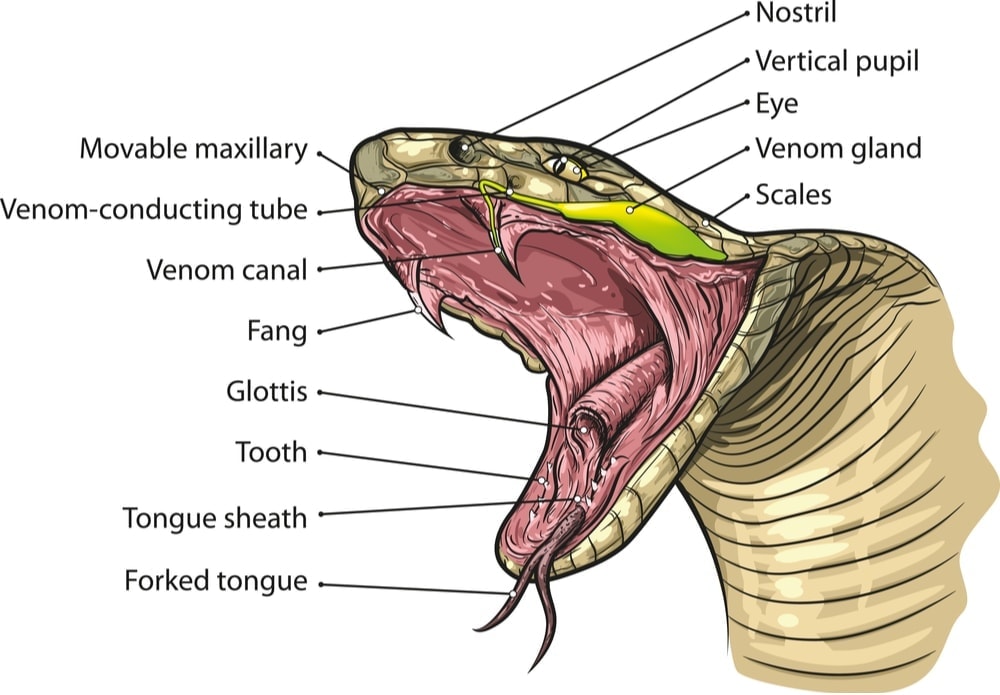
Snake Anatomy Information » Petsoid
A snake's body is made up of many parts. Each part has a specific function, or job.
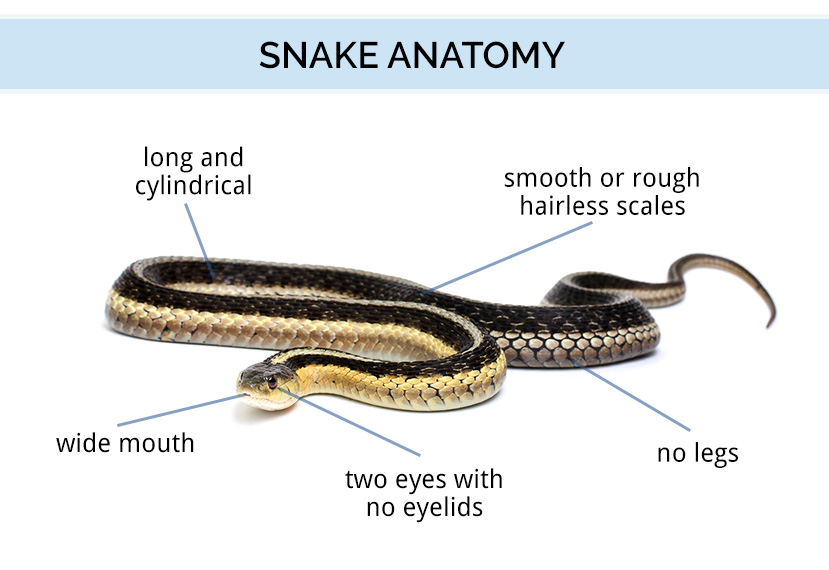
Snake Identification, Anatomy, & Life Cycle Types of Snakes
The snake diagram template can be edited and customized to suit personal taste. Colors, text, icons can be modified. The pre-designed snake diagram PPT template can work well when covering data or organizational process flow in a streamlined manner. Ideal for use by strategic planners, process managers, brand managers, etc….

Parts of a Snake Final Video YouTube
Snakes go through a cycle of birth, growth, reproduction, and death. Most species of snakes lay eggs, while others give live birth. When hatched or born, snakes are fully formed and equipped to survive. They grow by shedding their skin, and as they mature, they become sexually mature and breed during specific seasons.

anatomy of a snake Pet snake, Snake breeds, Corn snake
Although there aren't as many species of snakes as lizards, they are more widespread. There are only two living species of , although at one time there were many more that are now extinct. This animal lives on islands near New Zealand.
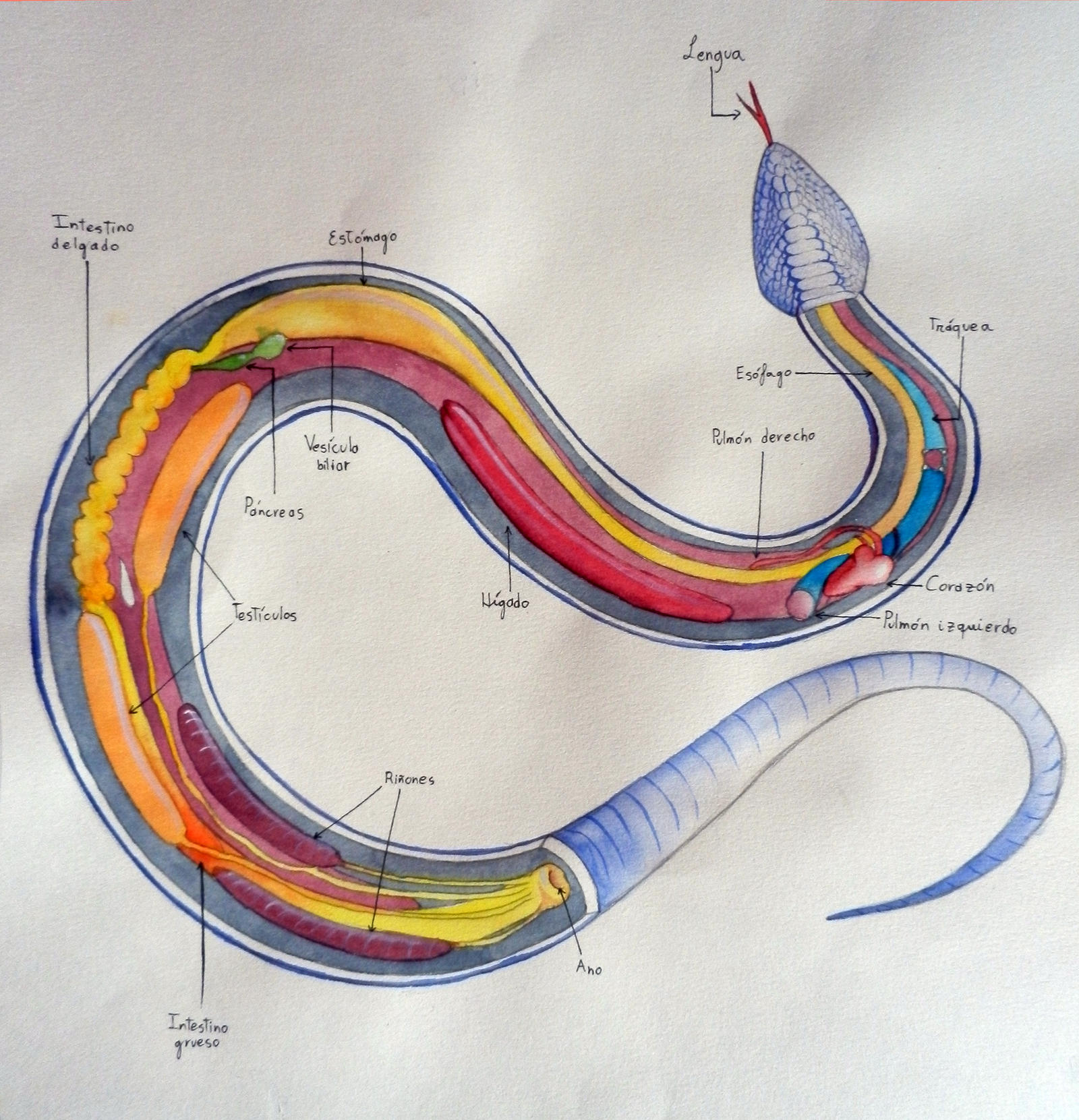
Snake organs (Anatomy study) by Erobertix on DeviantArt
Most snake skulls consist of many small, delicate bones that are unfused. The lower jaw is not fused at the center, allowing the snake to use its lower jaws like arms to slowly feed in prey. Snakes have very sharp, delicate teeth, and lots, and lots, and lots of them — typically on several different jaw bones! Avoid disturbing the teeth.

Anatomy of snake
snake skeleton The vertebral column of snakes is highly elongated and has more vertebrae than any other living animal—up to 600 in the Australian python ( Morelia oenpelliensis ).
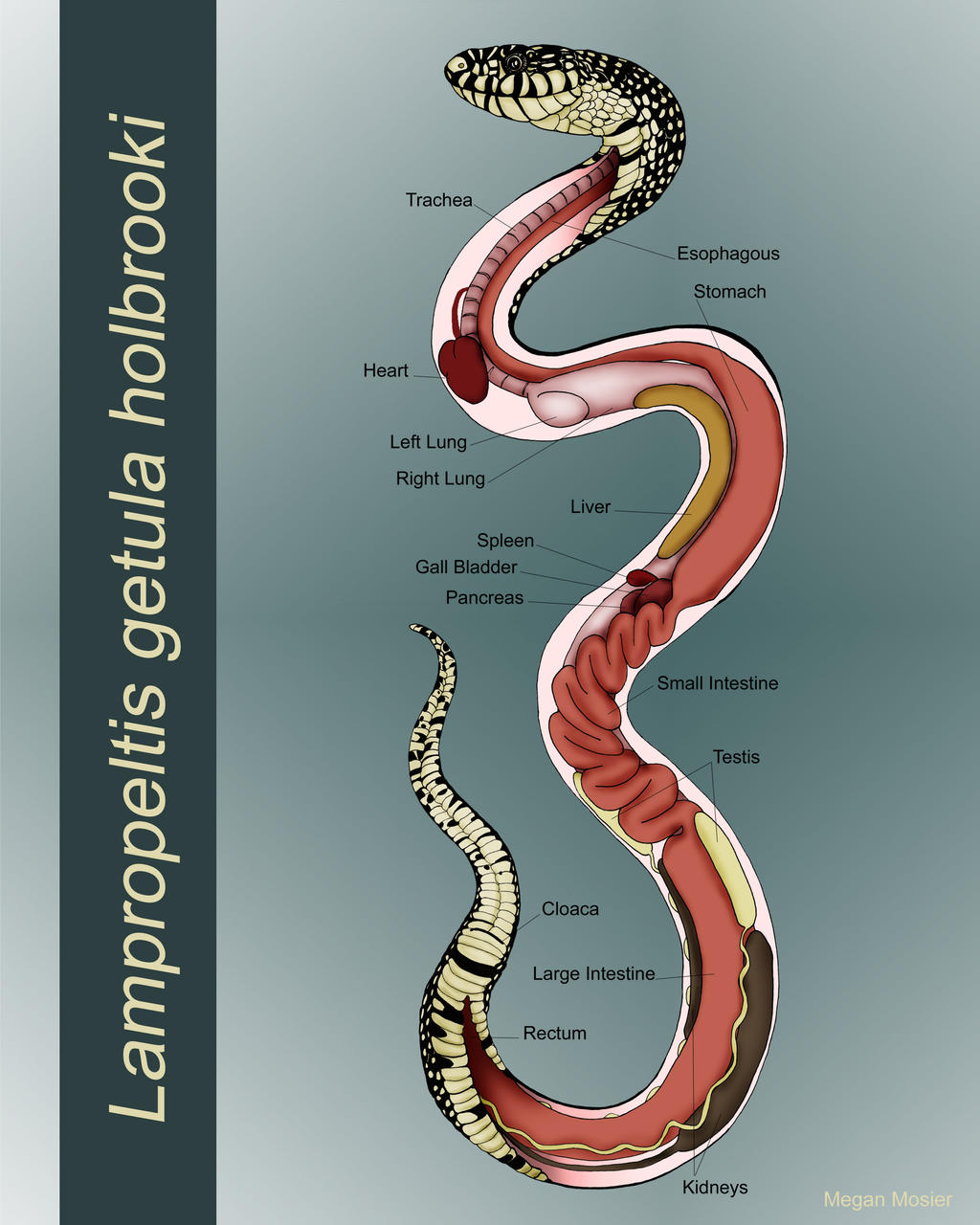
Anatomy of a Snake by MeganMosier on DeviantArt
Snake skeleton A snake skeleton consists primarily of the skull, vertebrae, and ribs, with only vestigial remnants of the limbs. Skull The skull of Python reticulatus. The skull of a snake is a very complex structure, with numerous joints to allow the snake to swallow prey far larger than its head.

Anatomy of a Female Grass Snake Old Book Illustrations
The teeth vary somewhat between the genera. The more commonly seen non-poisonous species such as the colubrid family (containing the kingsnakes and rat snakes) and the boid family, have simple, caudally curved, peg-like teeth. Some of the more poisonous species have specialist adaptations.
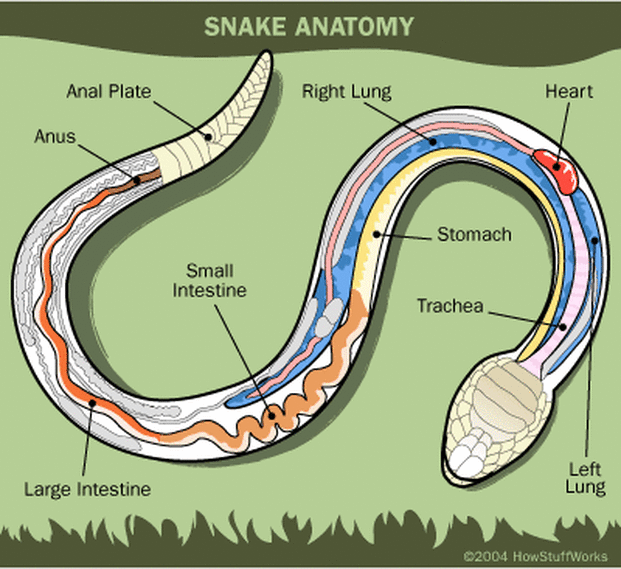
The Digestive System and Its Chordata Phylum Digestive System
one lung ectothermic long slender bodies There are over 3,500 individual species that fit these characteristics, with more being added each year. These 3,500+ species are split into 20 different families that can be further broken down into 520 genera.
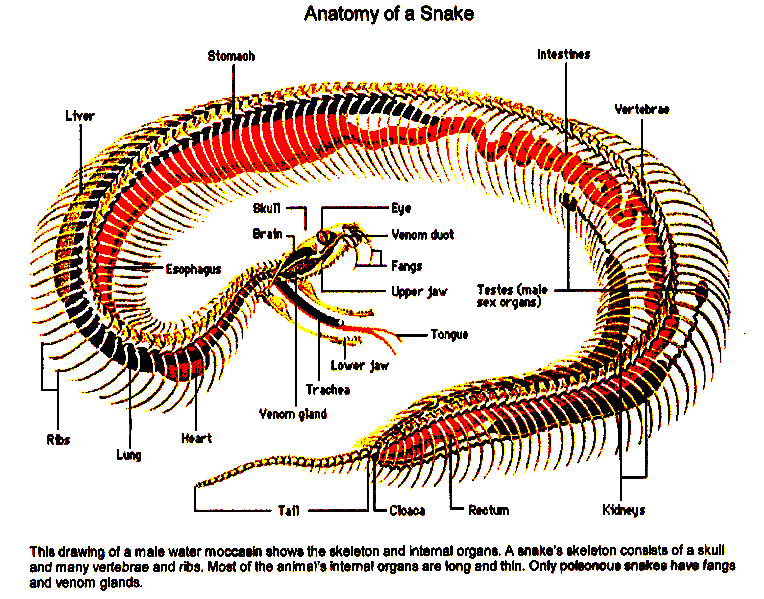
The anatomy of a snake Mike Cosgraves Weblog
Details of General Anatomical Features (click on the diagram at left for an enlarged version): Snakes have no moveable eyelids, limbs, ear openings, sternums, or urinary bladders. Most species have only one functioning lung, although many have a second, vestigial (essentially non-functioning, or only marginally functional) lung.

Snake Anatomy & Physiology Bugs In The News
Outer Beauty Most reptiles have four legs. Snakes, however, do not have legs. They also lack a pectoral girdle (shoulder bones) and — with the exception of the boids, which retain a vestigial pelvis and external spurs — they also lack a pelvic girdle (rear leg support).